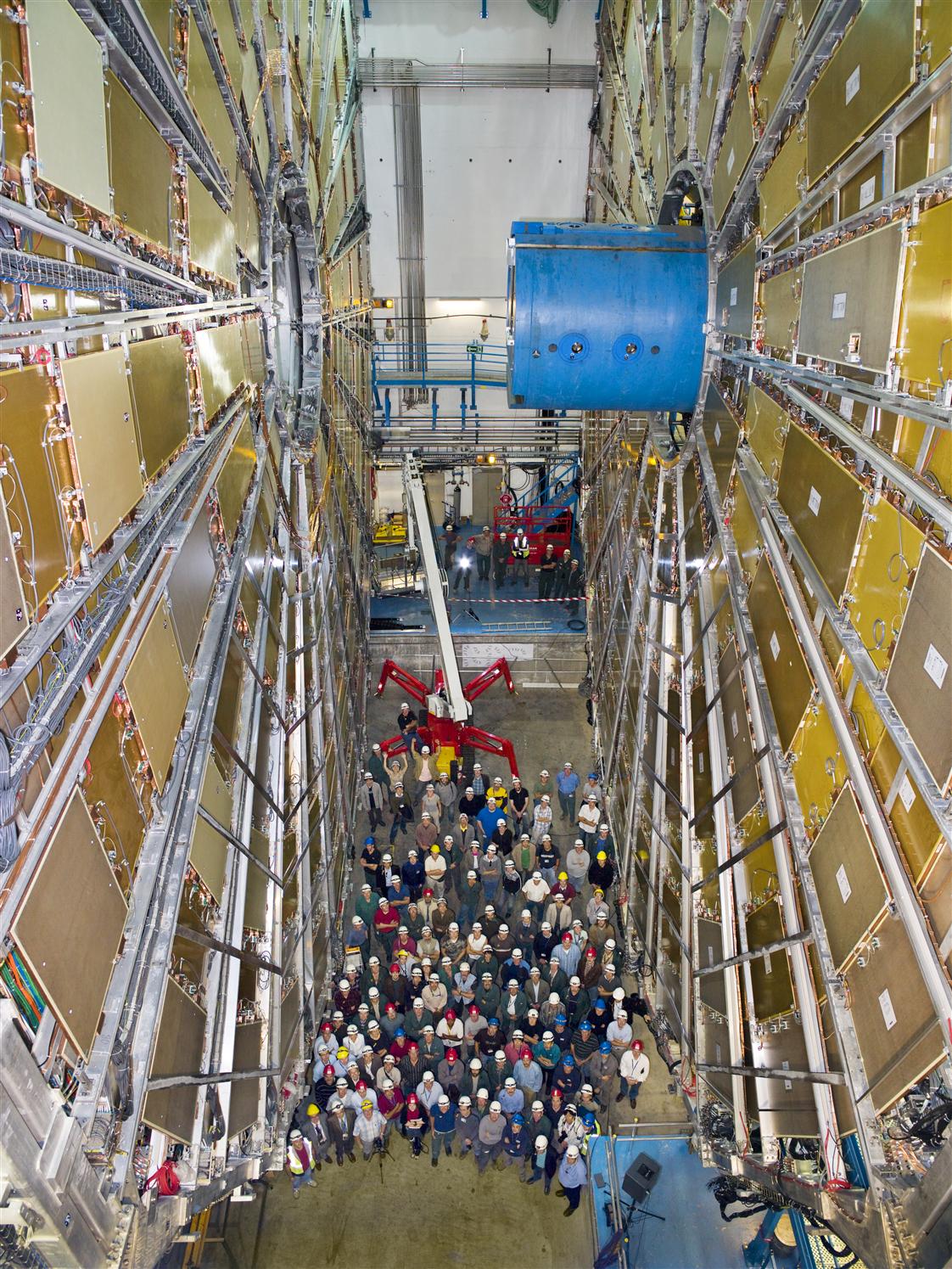
Satellite reveals universe's first trillionth second
Scientists peering back to the oldest light in the universe have new evidence for what happened within its first trillionth of a second, when the universe suddenly grew from submicroscopic to astronomical size in far less than a wink of the eye.
Timeline of the universe: The expansion of the universe over most of it's history has been relatively gradual. The notion that a rapid period "inflation" preceded the Big Bang expansion was first put forth 25 years ago. The new WMAP observations favor specific inflation scenarios over other long held ideas. Credit: NASA
Using new data from a NASA satellite, scientists have the best evidence yet to support this scenario, known as "inflation." The evidence, from the Wilkinson Microwave Anisotropy Probe (WMAP) satellite, was gathered during three years of continuous observations of remnant afterglow light -- cosmic background radiation that lingers, much cooled, from the universe's energetic beginnings 13.7 billion years ago.
In 2003, NASA announced that the WMAP satellite had produced a detailed picture of the infant universe by measuring fluctuations in temperature of the afterglow -- answering many longstanding questions about the universe's age, composition and development. The WMAP team has built upon those results with a new measurement of the faint glare from the afterglow to obtain clues about the universe's first moments, when the seeds were sown for the formation of the first stars 400 million years later.
"It amazes me that we can say anything about what transpired within the first trillionth of a second of the universe, but we can," said Charles L. Bennett, WMAP principal investigator and a professor in the Henry A. Rowland Department of Physics and Astronomy at The Johns Hopkins University. "We have never before been able to understand the infant universe with such precision. It appears that the infant universe had the kind of growth spurt that would alarm any mom or dad."
The newly detected pattern, or polarization signal, in the glare of the afterglow is the weakest cosmological signal ever detected -- less than a hundredth of the strength of the temperature signal reported three years ago.
"This is brand new territory," said Princeton University physicist Lyman Page, a WMAP team member. "We are quantifying the cosmos in a different way to open up a new window for understanding the universe in its earliest times."
Comparing the brightness of broad features to compact features in the afterglow light (like comparing the heights of short-distance ripples versus long-distance waves on a lake) helps tell the story of the infant universe. One long-held prediction was that the brightness would be the same for features of all sizes. In contrast, the simplest versions of inflation predict that the relative brightness decreases as the features get smaller. WMAP data are new evidence for the inflation prediction.
The new WMAP data, combined with other cosmology data, also support established theories on what has happened to matter and energy over the past 13.7 billion years since its inflation, according to the WMAP researchers. The result is a tightly constrained and consistent picture of how our universe grew from microscopic quantum fluctuations to enable the formation of stars, planets and life.
According to this picture, researchers say, only 4 percent of the universe is ordinary familiar atoms; another 22 percent is an as-yet unidentified dark matter, and 74 percent is a mysterious dark energy. That dark energy is now causing another growth spurt for the universe, fortunately, they say, more gentle than the one 13.7 billion years ago.
WMAP was launched on June 30, 2001, and is now a million miles from Earth in the direction opposite the sun. It is able to track temperature fluctuations at levels finer than a millionth of a degree.
The WMAP team includes researchers at the Goddard Space Flight Center in Greenbelt, Md.; The Johns Hopkins University; Princeton University; the Canadian Institute of Theoretical Astrophysics in Toronto; the University of Texas at Austin; Cornell University; the University of Chicago; Brown University; the University of British Columbia; the University of Pennsylvania; and the University of California, Los Angeles.


 Researchers have shown that nanodiamonds -- much like the carbon structure as that of a sparkling 14 karat diamond but on a much smaller scale -- are very effective at delivering chemotherapy drugs to cells without the negative effects associated with current drug delivery agents.
Researchers have shown that nanodiamonds -- much like the carbon structure as that of a sparkling 14 karat diamond but on a much smaller scale -- are very effective at delivering chemotherapy drugs to cells without the negative effects associated with current drug delivery agents.





 The finding could help researchers create drugs that lower the risk of diseases associated with high cholesterol, including atherosclerosis (clogged arteries) and Alzheimer's disease.
The finding could help researchers create drugs that lower the risk of diseases associated with high cholesterol, including atherosclerosis (clogged arteries) and Alzheimer's disease.